Direct IPC Comparison
Naturally, when a new CPU comes out, we want to know precisely how its IPC stacks up against competing CPU’s as well as the previous iteration. For this test, we had to select a common clock frequency that was achievable by all the CPU’s used in the comparison. Since my test Ryzen 7 2700X maxes out at 4.2GHz on all cores, that’s the clock speed we went with. Unfortunately, I didn’t have an 8c/16t Ryzen on hand for this comparison. As a result, I simulated it using the 3900X. I disabled four of the cores. Unfortunately, due to the layout of the CPU, Ryzen Master required a symmetrical layout which meant that I had to disable two cores in each CCX within the same CCD.
This has the unfortunate result of leaving our simulated eight core Ryzen with more L3 cache than it would ordinarily have. Therefore, the topology of the simulated eight core Ryzen 3000 series CPU, isn’t quite right. I’m fairly certain I’m going to get flak on this, and we are aware that this isn’t a perfect simulation. Having said that, our previous tests show that the cache difference didn’t create a huge delta between the Ryzen 7 2700X and the Ryzen 9 3900X and the latter still had four more cores and higher clock speeds to boot.
More importantly, we were able to compare a 2nd and 3rd generation Ryzen CPU using the same memory frequencies and timings as an Intel Core i9 9900K. This is as “apples to apples” as we can get without having more Ryzen 3000 series chips on hand. We will potentially revisit this topic at a later date, but this gives us some idea of how these CPU’s compare at the same frequency. Naturally, this isn’t a realistic scenario as I can clock RAM on the Ryzen 9 3900X to DDR4 3600MHz and I’ve got 4,000MHz RAM for the Core i9 9900K. Using PBO or manual overclocking, the Ryzen 9 and Core i9 9900K would also be at dramatically different clock speeds. This comparison is largely academic, and potentially entertaining. One thing we can potentially learn is what would happen if AMD closed the clock speed gap completely. How would Intel fair in gaming then? Well, let’s find out.
We didn’t run through our entire suite of tests. We disregarded things that wouldn’t be impacted by these settings such as memory bandwidth. I lost the data I collected from the Sandra CPU test, so that was omitted here. Lastly, I also omitted testing on the Threadripper system. Mainly this is because I didn’t think it was very useful for a direct IPC comparison. The platform is very different than X470, X570 and Z390. The CPU’s internal layout and memory configuration would put the CPU behind the Ryzen 9 3900X. I thought about using it as it has the same core and thread count, but again, the platforms are so different, that I didn’t think the comparison was nearly as useful. In a sense, we already have that comparison as the “all core” overclocks are fairly close in the other tests and the Threadripper 2920X lost every single one of those tests aside from the Sandra memory test.
wPrime

Right out of the gate, I was surprised to see that AMD’s 3rd generation Ryzen came out on top here.
V-Ray

Once again, the victory goes to AMD. We can also see the fairly substantial gains compared to Zen+.
POV-Ray

Here we see a massive win in favor of AMD. The Ryzen 7 2700X is also not that far behind Intel’s Core i9 9900K. This too was quite surprising.
Cinebench R20 – Multithread
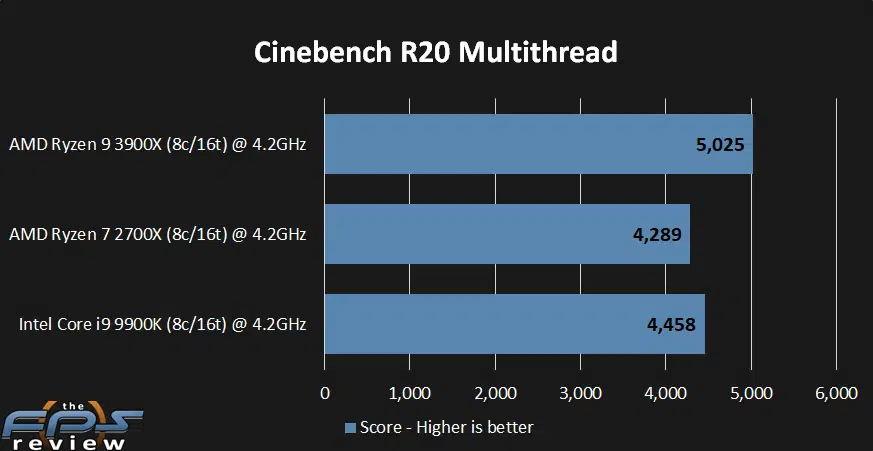
Again, as Intel puts it, this is a “best-case” test for AMD’s Ryzen CPUs. Despite losing a third of its cores and threads, the 3rd generation Ryzen still comes out on top by a wide margin.
Cinebench R20 – Single Thread

Here we see the same trend of AMD dominance.
Adobe After Effects CC – Puget Systems Benchmark
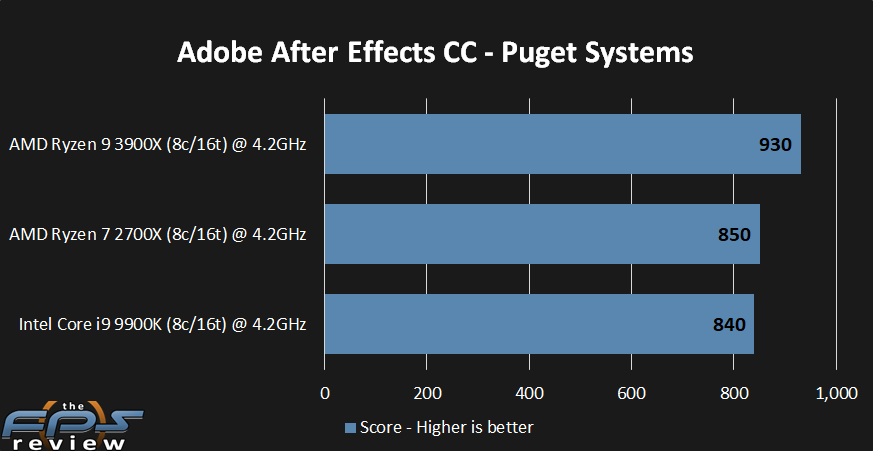
It’s worth noting that this is also the only test where the Threadripper 2920X beat the Ryzen 9 3900X. If you look back at the earlier benchmarks, the Threadripper 2920X scored a 970 in this test compared to 930 on the Ryzen 9 3900X. Undoubtedly, this must have something to do with the memory size, and or memory bandwidth that X399 and Threadripper brings to the table as it’s the only factors which favors the Threadripper system. It used the same video card, a slower SSD, and a slower processor in every other test. Clearly, the latency issues going across CCX complexes didn’t have an impact either. If it did, it was offset by the memory. To be fair, Adobe products like this are designed with workstations in mind. Adobe programs also really like memory and memory bandwidth.
Of course, another takeaway from this is that both AMD systems were faster in this case. There are potential architectural reasons for this. Of course, another likely variable has to do with the fact that the latest versions of Windows 10 contain some built-in mitigations for Intel’s security flaws. Additionally, I did al the microcode and firmware updates that applied as well. These factors almost certainly play into these results.
Blender
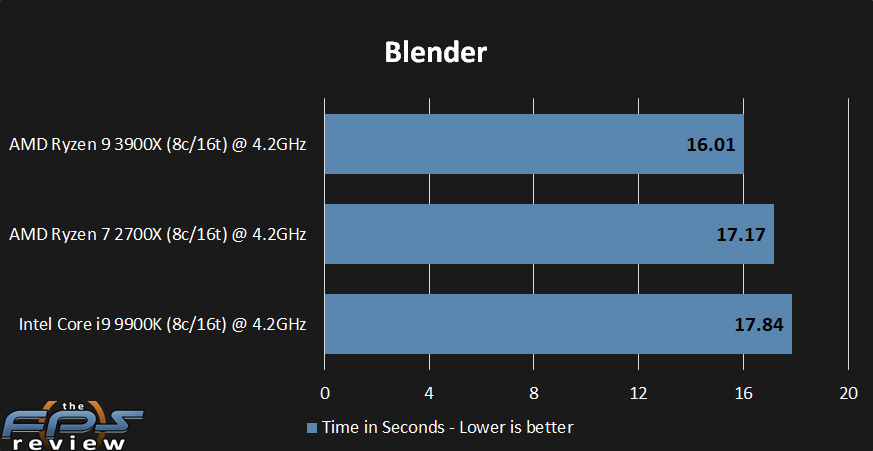
This is another case which favored both AMD systems. This shows us that AMD’s 2nd and 3rd generation Ryzen CPUs can absolutely dominate in content creation without having to lead through having a greater core count. This isn’t as surprising as one might initially believe. If you think about it, Ryzen was still relatively competitive in these areas even after Intel caught up with AMD on core and thread counts. Intel still generally won where core and thread counts were equal, but we can see this may often be simply due to clock speed. Do keep in mind that there are some mitigations in place for Intel’s security issues here, so that is a factor as well. We knew that those can cause that IPC gap to shrink and that’s what we are seeing here.
Gooseberry
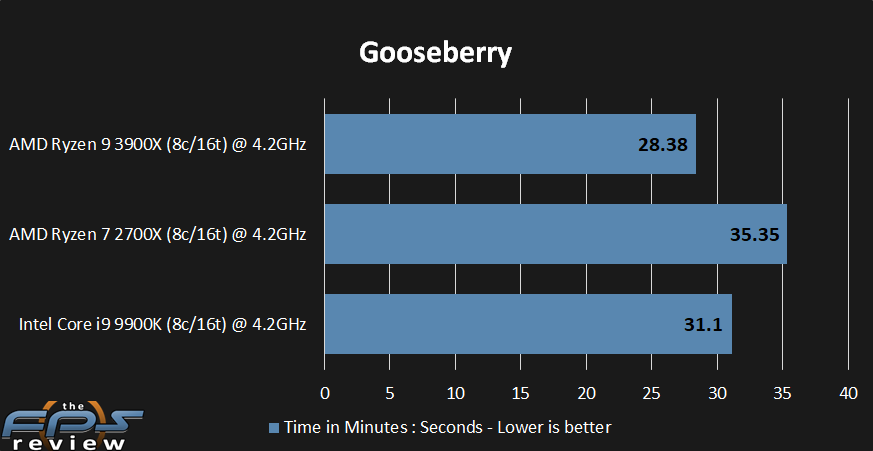
This is a test that plays out almost exactly as one might expect. Intel’s Core i9 9900K beats out AMD’s Ryzen 7 2700X, but fails to match the newer Ryzen 9 3900X, even with a third of its cores disabled. Again, security mitigations built into the OS, updated microcode and mitigations in firmware certainly contribute to this.
Heaven

This is another test with a surprising result. AMD’s Ryzen 9 3900X manages another win at this clock speed.
The Division 2
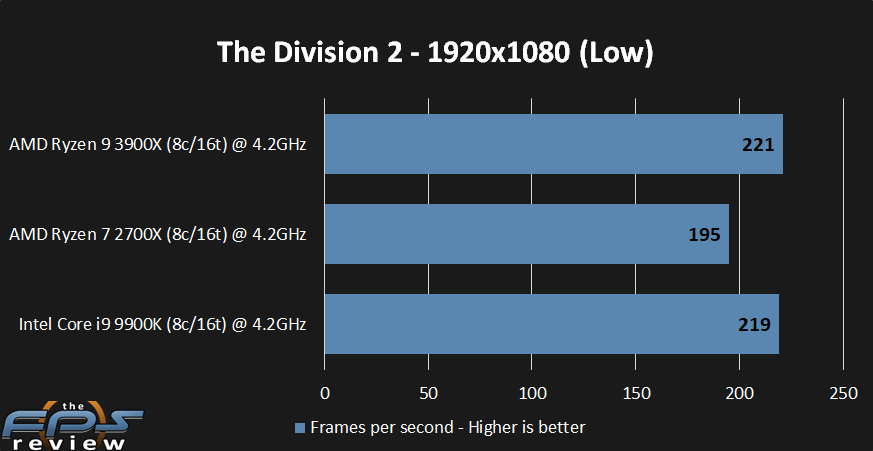
Again, we see the 3rd generation Ryzen edge out the Intel Core i9 9900K. At their normal clocks, we see quite the opposite, showing that this game seems to be sensitive to clock speeds.
Shadow of the Tomb Raider
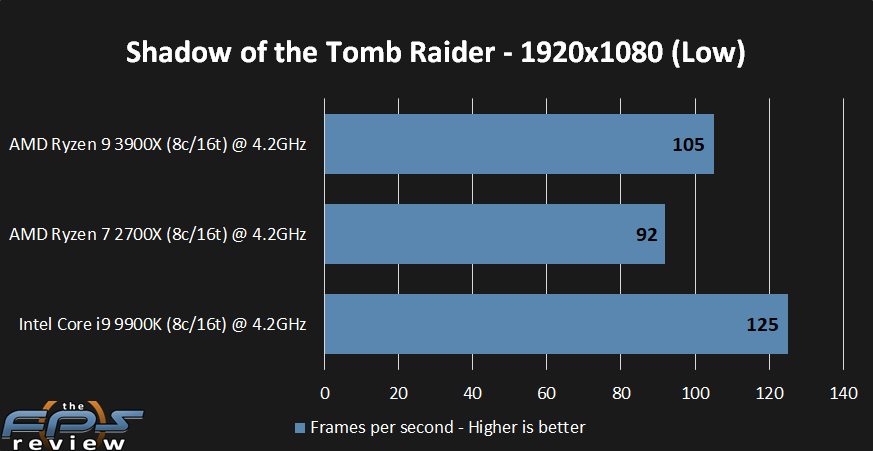
This is a test where we see what we expected to see. Intel’s performance is far greater than that of its rival. In a way, this is precisely what AMD said would happen in that its often older titles that benefit from the added cache. Hitman and Shadow of the Tomb Raider are fairly new games built on up to date game engines. I’m convinced the cache has allot to do with the improved performance relative to the Ryzen 7 2700X, but its not enough to close the gap with Intel’s Core i9 9900K.
Hitman 2
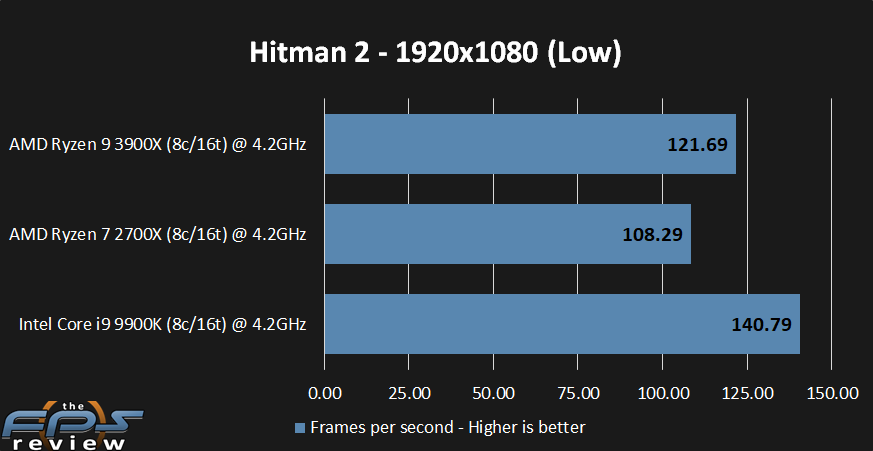
This is another title where AMD absolutely gets beaten down by Intel’s Core i9 9900K. It proves to be a beast in this game. Again, this is somewhat odd given the clock speed parity. As AMD said, it wins some and loses some. That’s certainly the case in our testing.
